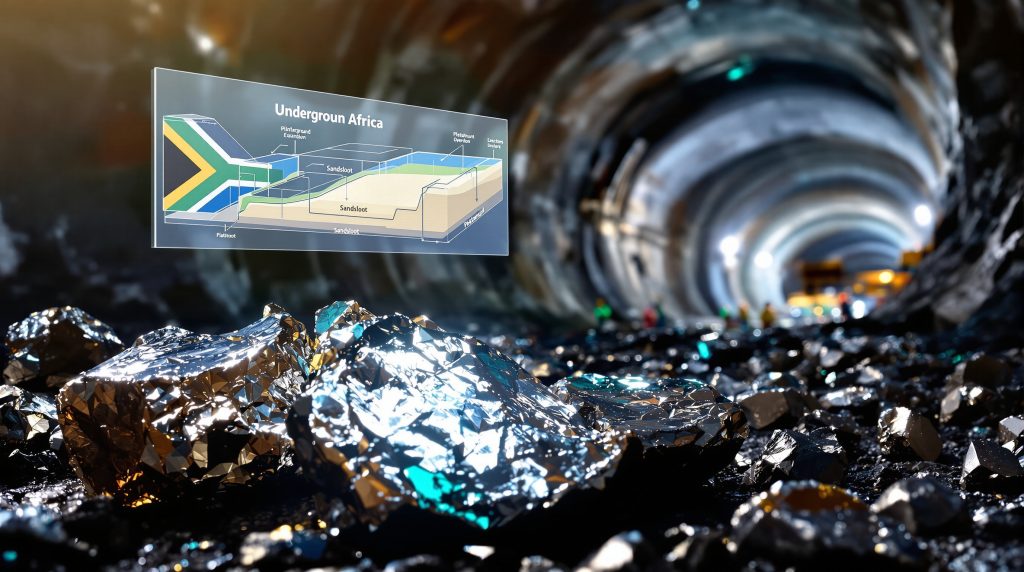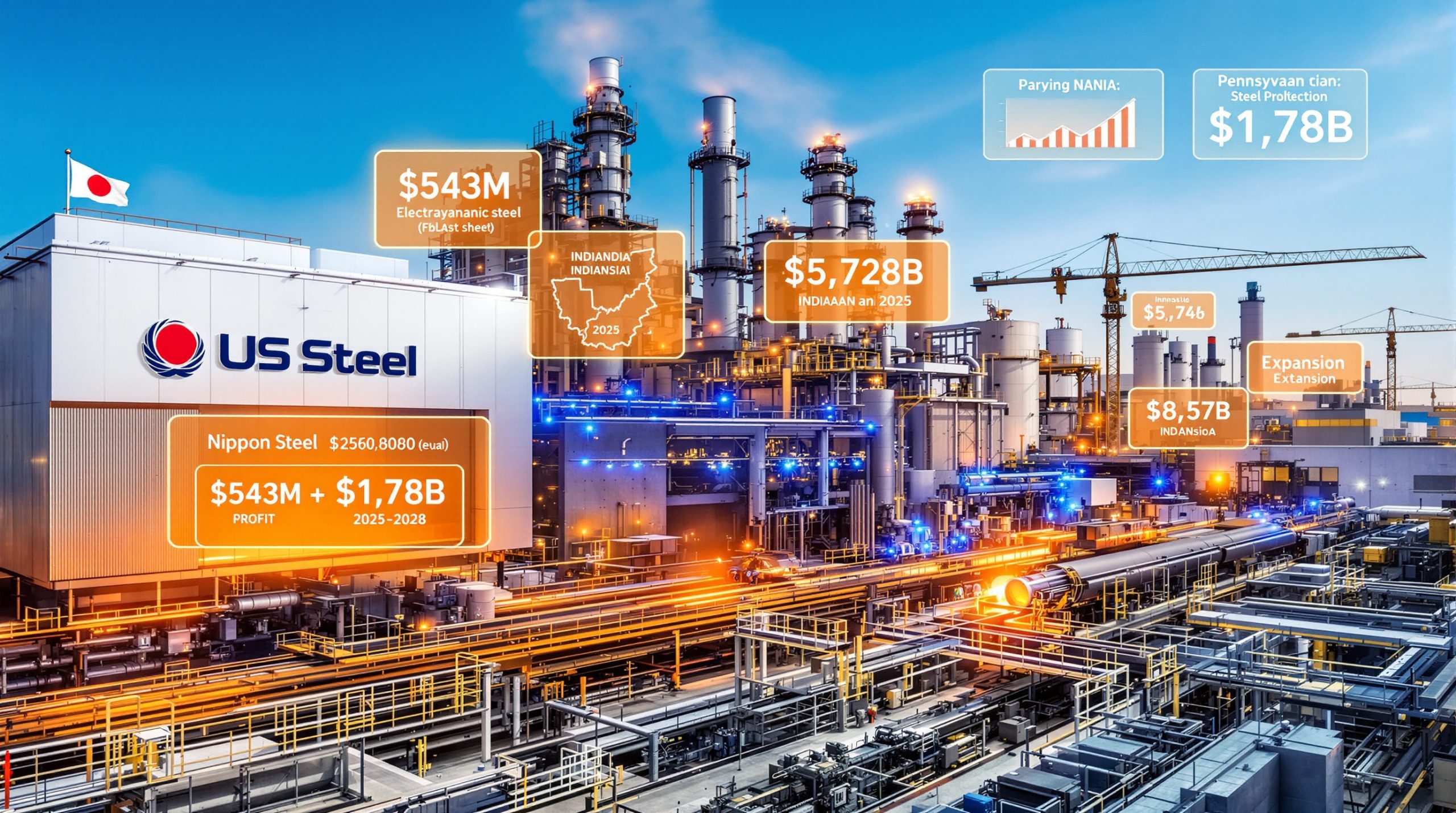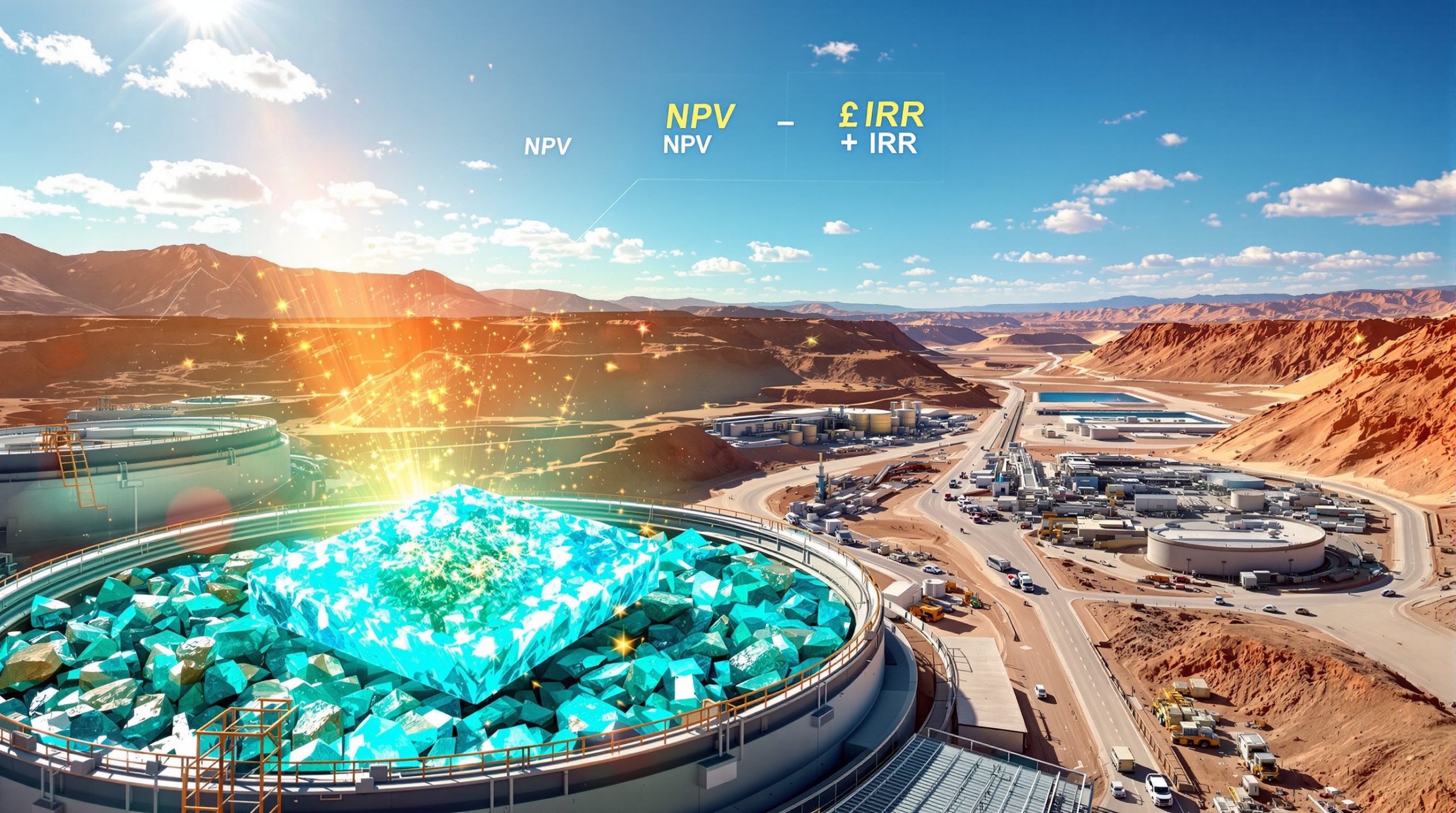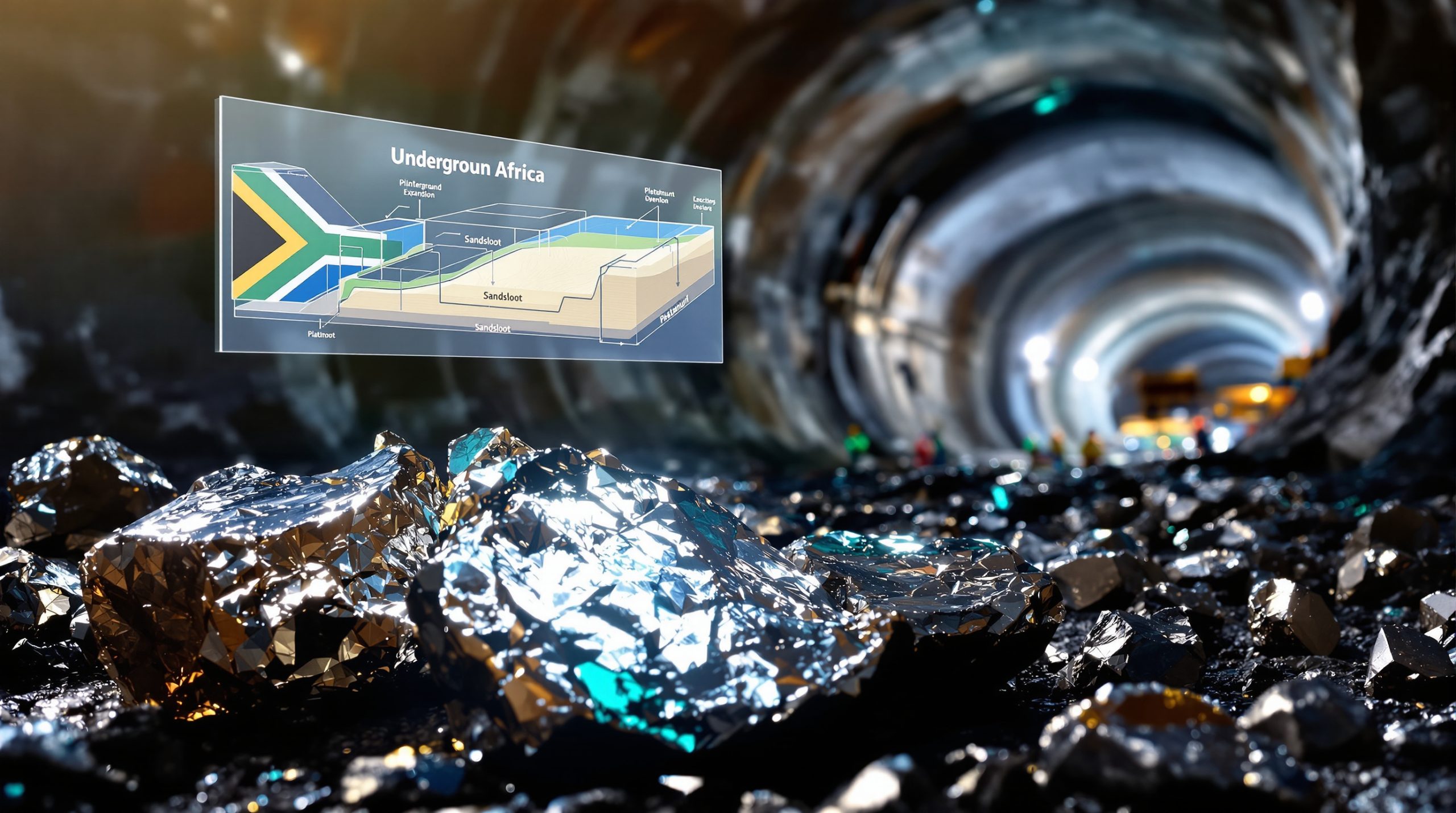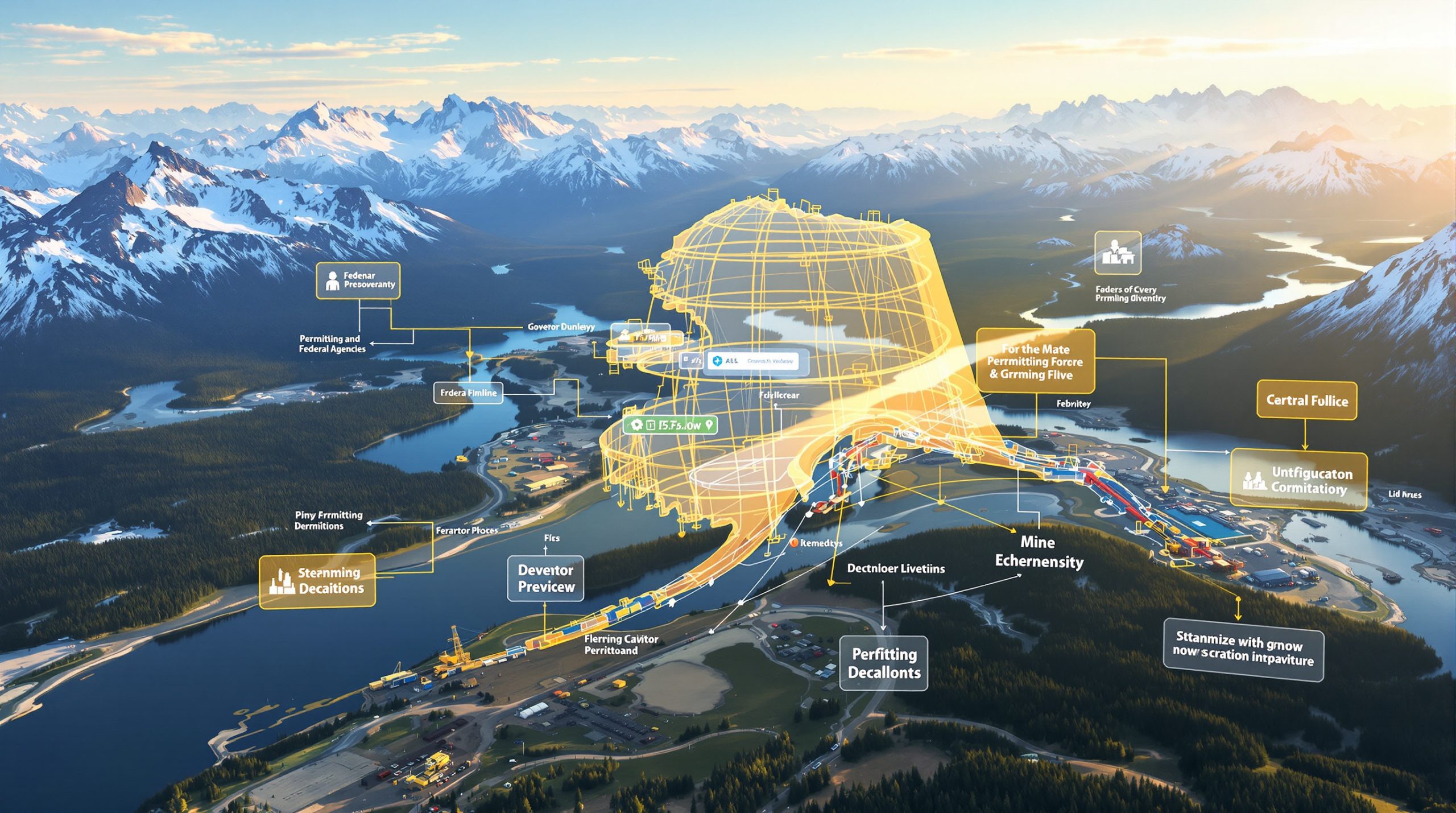Valterra Platinum's Underground Mining: Strategic Expansion at Mogalakwena
Valterra Platinum is embarking on a significant underground mining initiative at its flagship Mogalakwena mine in South Africa, marking a strategic shift in its approach to platinum group metals (PGM) extraction. This ambitious project targets the higher-grade ore body beneath the existing Sandsloot open pit, with Valterra Platinum underground trial mining scheduled to commence in late 2026.
Located in Limpopo province north of Johannesburg, Mogalakwena stands as the world's largest open-pit PGM mine with five distinct pits. The Sandsloot pit, where underground development is being planned, contains notably higher grades of ore compared to other areas of the mine, making it an ideal candidate for this expansion.
Project Timeline and Development Phases
The underground mining project is currently in the feasibility study phase, with completion and investment decision targeted for the first half of 2027. According to Stephan Nothnagel, general manager of Mogalakwena underground mining studies, the company envisions trial mining beginning "in the back end of 2026."
If the project meets Valterra's capital allocation requirements, the company will begin trucking the first ore from the top part of the ore body to the surface. Beyond 2030, the operation could potentially ramp up to full-scale production of 3.6 to 4.5 million tonnes annually.
The phased approach allows Valterra to validate economic assumptions and technical feasibility before committing to full-scale development, minimizing initial capital requirements while maximizing long-term potential.
Why is Valterra Moving Underground at Mogalakwena?
Addressing Declining Ore Grades
South African platinum miners have faced deteriorating ore grades for years, a challenge that has become increasingly significant for the industry. To maintain production levels, companies have been forced to mine deeper underground, despite the increased costs and operational risks this entails.
The underground expansion at Mogalakwena represents a strategic response to this industry-wide challenge. By accessing the higher-grade deposits beneath the Sandsloot pit, Valterra aims to enhance the quality of extracted materials while extending the productive life of this crucial asset.
Economic and Strategic Significance
Mogalakwena is undoubtedly the crown jewel of Valterra's portfolio, contributing approximately 50% of the company's total PGM production. This substantial investment in underground mining marvels demonstrates a strong vote of confidence in the future of platinum group metals despite recent market challenges.
The project aims to achieve an overall increase in Mogalakwena concentrate production of 10% to 50%, significantly boosting the mine's output capacity. This production enhancement comes at a critical time for the PGM industry, which has seen prices decline over the past two years due to shifting automotive trends.
Market Adaptation Strategy
Valterra's underground expansion represents a multifaceted approach to address several concurrent challenges:
| Challenge | Strategic Response |
|---|---|
| Declining surface grades | Access higher-grade underground deposits to improve yield |
| Rising operational costs | Implement modern mechanized mining methods for efficiency |
| Market price volatility | Secure premium-grade material to improve profit margins |
| EV competition | Target growth in hydrogen and fuel-cell markets |
Martin Poggiolini, executive head of corporate strategy, and Agit Singh, head of processing operations, have indicated that the company is scaling up demand across existing markets such as hydrogen production and fuel-cell electric vehicles while simultaneously creating demand in new segments.
Singh expressed "really good confidence in the fundamentals around the PGM sector in the short term and certainly in the longer term," highlighting the company's optimistic outlook despite current market headwinds.
How Will the Underground Trial Mining Process Work?
Initial Development Activities
The underground trial mining phase will begin with extensive exploration drilling to confirm the characteristics of the underground ore body. This critical data collection process will help engineers develop appropriate mining methods tailored to the specific geological conditions.
Access infrastructure, including declines and shafts, will be developed to reach the target ore zones. These access points will later serve as the primary conduits for ore extraction, personnel movement, and ventilation during production phases.
Nothnagel indicated that if the project meets capital allocation requirements, they "will be able to truck the first ore out of the top part of the ore body to the surface," suggesting a phased approach to underground development.
Technical Challenges and Solutions
The transition from open-pit to underground mining presents numerous technical challenges. Underground operations require different equipment, expertise, and safety protocols compared to surface mining. The company will need to implement appropriate ground support systems to ensure the stability of underground workings.
Efficient ore haulage from underground to surface will be critical for maintaining productivity. The initial trial mining phase will likely test various transportation methods to identify the most effective approach for full-scale operations.
Integration with existing processing facilities represents another key challenge. The company will need to ensure that ore from underground operations can be effectively processed alongside material from continuing open-pit operations.
Safety and Operational Considerations
Underground mining inherently carries different safety considerations compared to open-pit operations. Enhanced ventilation systems will be required to maintain air quality in the underground environment, particularly as mining depths increase.
Modern mechanized mining techniques will likely be employed to minimize human exposure to hazardous conditions while maximizing productivity. These approaches may include remote-controlled or semi-automated equipment that allows operators to work from safer locations.
Digital mining operations will play a crucial role in maintaining safety and operational efficiency. These technologies enable real-time tracking of equipment, personnel, and environmental conditions throughout the underground workings.
What Impact Will This Project Have on PGM Markets?
Production Volume Implications
The underground expansion at Mogalakwena has the potential to increase the mine's concentrate production by 10% to 50%, representing a significant boost to global PGM supply. This production increase comes at a time when many producers have been cutting supply due to declining demand.
The strategic timing of this project appears aimed at aligning with a projected market recovery. While current PGM prices have mostly declined over the past two years, Valterra's leadership has expressed confidence in both short-term and long-term market fundamentals.
This substantial production increase from one of the world's premier PGM operations could have stabilizing effects on global supply, potentially influencing price dynamics as the market evolves.
Market Positioning Strategy
Valterra is pursuing a dual approach to market challenges. First, they're scaling up presence in hydrogen production applications, which represent a growing market for PGMs as green hydrogen initiatives gain momentum globally.
Second, they're targeting the growing fuel-cell electric vehicle segment, which requires significant PGM loadings for catalysts. Unlike battery electric vehicles, which have negatively impacted PGM demand, fuel-cell vehicles represent a potential growth market for these metals.
Beyond these established applications, the company is developing new market applications for PGMs to diversify end-use beyond traditional automotive catalysts, which have faced pressure from the transition to battery electric vehicles.
Long-term Market Outlook
Despite short-term market challenges, Valterra executives have expressed strong confidence in PGM sector fundamentals. This optimism appears to be based on projections for growing demand in emerging applications that could offset losses in traditional markets.
The underground expansion represents strategic positioning for both near-term production optimization and long-term market conditions. By accessing higher-grade materials, the company aims to maintain competitive margins even during periods of price volatility.
The diversification of end-use applications beyond traditional automotive catalysts stands as a crucial element of the company's forward-looking strategy, recognizing the need to develop new markets as transportation technologies evolve.
How Does This Project Compare to Other PGM Mining Developments?
Industry Context and Competitive Analysis
The shift toward underground mining represents a broader trend across South African beneficiation sector. As surface deposits become depleted or lower grade, major producers are increasingly looking underground to maintain production levels and access higher-quality resources.
Mogalakwena's ore body quality provides comparative advantages in this transition. The higher grades available in the Sandsloot pit area potentially offer better economics compared to some competing operations, potentially strengthening Valterra's competitive position.
This positioning is particularly important given the challenging market conditions for PGM producers. The ability to extract higher-grade material could provide crucial margin advantages during periods of price pressure.
Investment and Capital Allocation
Valterra is subjecting the underground project to rigorous capital allocation framework before proceeding with full implementation. This disciplined approach reflects industry-wide concerns about capital efficiency and return on investment.
The phased approach, beginning with trial mining before committing to full-scale development, minimizes initial capital requirements while allowing the company to validate economic assumptions and technical feasibility.
This cautious, staged development approach aligns with industry best practices for major capital projects, particularly in the current environment of market uncertainty and price volatility.
Technological Innovation
The underground project presents opportunities to implement modern bulk mechanized mining methods that could significantly improve productivity compared to conventional approaches. These technologies may include automated drilling, loading, and hauling systems.
Digital technology integration opportunities abound in modern underground mining. From real-time equipment monitoring to predictive maintenance systems, digital solutions can enhance safety, reduce downtime, and optimize resource utilization.
The potential for automation and remote operations represents another frontier for innovation. These technologies could allow for continuous operations while minimizing human exposure to hazardous underground environments.
What Are the Environmental and Social Considerations?
Sustainability Aspects
Underground mining presents a different environmental footprint compared to open-pit operations. While surface disturbance may be reduced, other factors such as energy consumption and ventilation requirements can increase the operation's environmental impact.
Water management considerations become particularly important in underground mining operations. Groundwater inflows must be carefully managed to maintain safe working conditions while minimizing impacts on local water resources.
Energy requirements for underground mining typically exceed those of surface operations due to the need for ventilation, dewatering, and material transport up to the surface. Efficiency measures will be crucial for minimizing the carbon footprint of these activities.
As underground development progresses, rehabilitation planning for existing open pits will become increasingly important. The transition between mining methods presents opportunities to implement progressive rehabilitation strategies.
Community Impact
The shift to underground mining carries significant employment implications for the local workforce. While underground operations may require different skill sets compared to open-pit mining, they often provide more jobs per tonne of ore produced.
Skills development requirements for underground operations will necessitate comprehensive training programs. These initiatives can provide valuable upskilling opportunities for local workers, enhancing their long-term employability.
Stakeholder engagement processes will be crucial for maintaining community support during this transition. Open communication about project timelines, employment opportunities, and environmental management plans can help address community concerns proactively.
The long-term regional economic benefits of extending Mogalakwena's productive life could be substantial. As one of the region's major employers, the continued operation of this flagship mine has significant implications for local businesses and service providers.
What Are the Key Challenges and Risk Factors?
Technical and Operational Risks
Geological uncertainties represent a significant risk factor in underground mining environments. Despite extensive exploration, unexpected ground conditions can impact development schedules and mining methods.
The effectiveness of selected mining methods for the specific ore body characteristics remains to be fully validated. The trial mining phase will be crucial for confirming that the proposed approaches can achieve targeted productivity and recovery rates.
Production ramp-up timelines may face feasibility challenges common to underground mine development. Delays in development, equipment commissioning, or achieving design productivity could impact the project's economics.
Integration with existing operations presents logistical and scheduling challenges. Balancing production from underground and open-pit sources while optimizing processing capacity utilization will require careful planning and coordination.
Market and Economic Considerations
PGM price volatility could significantly impact project economics. As primarily industrial metals with specific end-use applications, platinum group metals have shown considerable price fluctuations in response to changing demand patterns.
Competitive pressure from alternative technologies, particularly battery electric vehicles, continues to create uncertainty in traditional PGM markets. This technological transition has already contributed to price declines over the past two years.
Capital expenditure requirements versus projected returns will be carefully scrutinized before proceeding with full-scale development. The substantial investment required for underground development must be justified by projected revenue streams in an uncertain market environment.
Operating cost management in the underground environment presents ongoing challenges. Underground mining typically incurs higher per-tonne costs compared to open-pit operations, making efficiency and productivity optimization crucial for maintaining competitive margins.
What Is the Future Outlook for Valterra's PGM Operations?
Post-2030 Production Scenarios
Full-scale underground production of 3.6-4.5 million tonnes annually represents the potential long-term vision for Mogalakwena's underground operations. This production level would significantly extend the mine's productive life while maintaining its position as a cornerstone of Valterra's portfolio.
The integration of underground and remaining open-pit operations presents opportunities for optimization. Blending of ores from different sources can help maintain consistent feed quality to processing facilities while maximizing resource utilization.
Processing capacity optimization opportunities may emerge as underground production ramps up. Modifications to existing facilities or potential capacity expansions could enhance recovery rates and concentrate quality from the higher-grade underground material.
Extended life-of-mine projections resulting from the underground expansion could potentially add decades to Mogalakwena's productive life. This longevity would provide stable employment and economic benefits to the region while securing long-term PGM supply.
Strategic Market Positioning
Adapting to evolving automotive industry requirements remains central to Valterra's strategy. While battery electric vehicles have impacted traditional catalyst demand, tightening emissions regulations continue to drive PGM loadings in conventional vehicles.
Expanding presence in emerging applications represents another strategic priority. Hydrogen production, fuel cells, medical devices, and chemical catalysts all present growth opportunities that could offset declining demand in traditional markets.
Maintaining a competitive cost position will be crucial for long-term success. The higher-grade material from underground operations should help offset increased mining costs, potentially preserving margins even in challenging price environments.
Leveraging premium ore grades for market advantage during cyclical downturns represents a key strategic benefit of the underground expansion. Higher-grade material typically provides greater resilience during periods of price pressure.
Innovation and Technology Roadmap
Digital transformation initiatives will likely play an increasing role in optimizing underground operations. From mine planning to equipment maintenance, digital technologies offer substantial opportunities for efficiency improvements.
Automation potential for underground operations continues to advance rapidly. Remote-controlled or autonomous equipment can enhance safety, extend operating hours, and improve productivity in challenging underground environments.
Processing technology enhancements could improve recovery rates and concentrate quality from underground ore. Advances in flotation, grinding, and separation technologies may unlock additional value from the higher-grade material.
Sustainability-focused operational improvements will become increasingly important as environmental standards evolve. Energy efficiency, water management, and emissions reduction initiatives will help minimize the environmental footprint of underground operations.
FAQ: Valterra Platinum's Underground Mining Project
What is the timeline for Valterra's underground mining project?
Trial mining is scheduled to begin in late 2026, following completion of the ongoing feasibility study. The final investment decision is expected in the first half of 2027, with potential full-scale production ramping up beyond 2030 if the project proceeds as planned.
How significant is Mogalakwena to Valterra's overall production?
Mogalakwena contributes approximately 50% of Valterra's total PGM production, making it the cornerstone of the company's portfolio. The mine's strategic importance underscores the significance of this underground expansion initiative.
What production increase is expected from the underground expansion?
The company projects a 10-50% increase in Mogalakwena concentrate production once the underground operation reaches full capacity. This substantial production boost would significantly enhance Valterra's output and revenue potential.
How is Valterra addressing challenges in the PGM market?
The company is pursuing a dual strategy of scaling up demand in existing markets like hydrogen production and fuel-cell vehicles while simultaneously developing new market applications. This approach aims to diversify end-use sectors beyond traditional automotive catalysts.
What mining methods will be used in the underground operation?
The project will implement bulk mechanized mining methods, optimized for the specific characteristics of the Sandsloot ore body. These modern approaches should enhance productivity and safety compared to conventional underground mining techniques, reflecting the broader mining industry evolution taking place globally. Additionally, the company plans to incorporate comprehensive drilling programs overview to ensure optimal resource extraction and development planning.
According to Mining Weekly, the Sandsloot platinum underground project shows considerable promise, with detailed plans for trial mining already underway. Furthermore, as reported by Reuters, Valterra Platinum's strategic move underground represents a significant step in the company's future growth trajectory.
Ready to Benefit from the Next Major Mineral Discovery?
Take advantage of Discovery Alert's proprietary Discovery IQ model that instantly notifies investors of significant ASX mineral discoveries, turning complex data into actionable insights. Discover why historic mining discoveries generate substantial returns by visiting the dedicated discoveries page and begin your 30-day free trial today.
